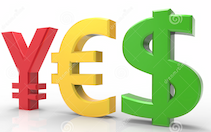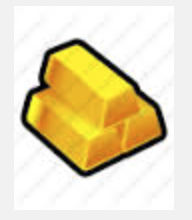To non-dollar users, the '$' is understood as a foreign dollar of some kind, just as the Netflix icon for many people in the world gets recognized as the universal symbol for a movie that is "not available in [their/your] region".

You can say "patriotism" is the cause (as the accepted answer seems to have), or you can say pavlovian training is the cause, but both symbols have evolved to mean that comprehensive localization wasn't done, that it's probably not going to work for non-'$' users or non-netflix regions, and that those users may waste their time if they click on that button (when they could be using that precious time instead watching the latest cute cat videos).
Anyway, my point is that localization is important, especially for an invoicing system. It's not just the currency symbol that needs to be localized, it's also the punctuation. 1,000 Euros may mean 1000 Euros to you, but to a French person, that comma means that amount is just 1 Euro. And don't even get me started on VAT (Value Added Tax) or Sales Tax depending on where you are located and various other factors. And other cases still, it could also mean that the credit/debit card from your own home country is not going to work.
So if the localization work hasn't been done (except for the simplest of cases), as this is what is being implied by your assignment from your boss/client, then yes, you might as well use that icon. It will send the right signal on what to expect to a prospective user. And this is fine. I don't mean to say that generic non-localized solutions are not fine.
On the other hand, if you management/client decides one day to make an effort in localization, then use an icon overlayed with the appropriate UTF-8 currency (or use an icon overlayed with another partially transparent icon). In other words, treat it like any other button, do not hardcode the localized symbol with the image together, just overlay one on top of the other.
Thankfully, our technology has advanced to such a point that the average user won't be able to notice that the final composite icon was assembled at installation time, or at the last second, just for him.











